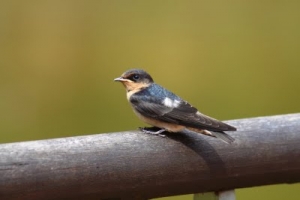Solution for farmers, Household
Keeping birds out can help control feed costs

As small as they are, birds may seem like an insignificant source of shrink, but consider the following example. According to Dr. Mike Brouk, Kansas State University Extension, starlings can consume up to half of their body weight in grain each day. If a farm has 20,000 starlings and 80 percent of them steal feed, they may be eating 1,000 pounds of grain per day.
Brouk also estimates that starlings eat 0.0625 pounds per bird each day, and they usually only eat concentrate. This is not only more expensive than forage, but if concentrates are eaten from the feedbunk, the remaining feed is no longer the intended ration.
Birds not only eat feed, they also contaminate it with feces, which may reduce intake or spread disease. Facility design can limit birds' access to bunks, and habitat and population management can help when access cannot be eliminated. Reducing feed availability during the day can help because that is when birds feed most actively.
Here are some steps from Penn State University you can take to reduce your bird problem:
- Clean up all spilled grain.
- Store grain in birdproof containers.
- When possible, use covered feeders that exclude birds.
- Maintain the water level in livestock waterers so it is deep enough that birds cannot stand in it, but shallow enough that it cannot be reached by a bird perched on the edge of the waterer.
Although costly, the best way to reduce problems is to exclude birds from the buildings:
- Hang plastic strips in doorways. To block doorways that cannot be kept closed, hang strips of heavy plastic vertically in the doorway. They allow machinery and people to pass through but keep birds out.
- Close all openings more than 0.5 inch. Block openings to lofts, vents and eaves with wood, metal, glass or wire mesh.
- Repair broken window panes.
- Exclude birds from roosting sites by covering the undersides of the rafters with netting.
Porcupine wires discourage pigeons from roosting on structures.





















